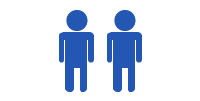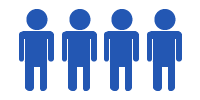Create consumer goods
 Two workers can make one consumer good
Two workers can make one consumer good
 One machine can make one consumer good
One machine can make one consumer good

Create capital goods
 Four workers can make one capital good
Four workers can make one capital good
 Two machines can make one capital good
Two machines can make one capital good
 Two workers and one machine can make one capital good
Two workers and one machine can make one capital good
